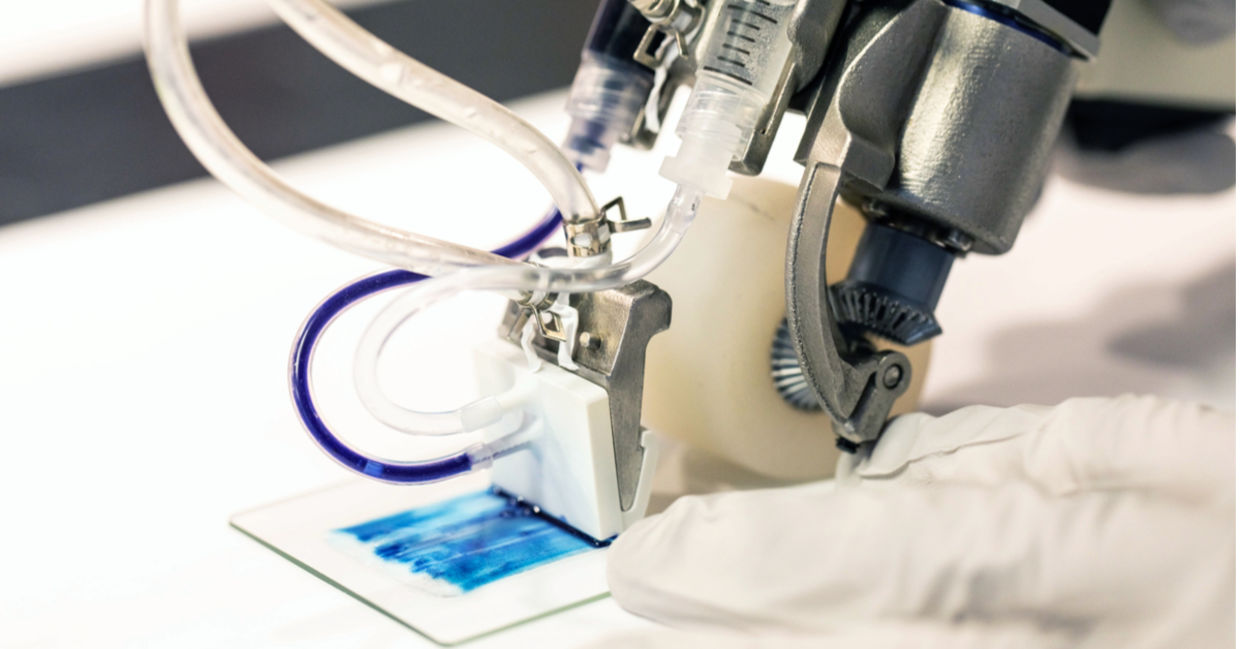
(Daria Perevezentsev / University of Toronto)
The medical uses of 3D printing is rapidly advancing. You can print corneas that could help visually impaired people see again, implant 3D printed bones, and scientists are working on printing organs for safer transplants.
Now, new research from the University of Toronto in Canada has developed a handheld unit that can print skin to quickly cover deep burns and help them heal.
For patients with deep wounds that involve all three layers of skin – the epidermis, dermis and hypodermis the damage can be very severe. Current treatments involve grafting a skin transplant unto the burned area. Undamaged skin from the patients is usually used for the grafts.
Of course, this method requires large areas of healthy skin to cover all three layers of the burn and if not available, part will be uncovered and may not thoroughly heal according to a press release from the university. While there are some skin substitutes available, they are not in wide use.
The idea of using a 3D printer to manufacture tissue engineered skin is not new but, “Most current 3D bio -printers are bulky, work at low speeds, are expensive and are incompatible with clinical application,” said Professor Axel Guenther of the faculty of applied science & engineering at the University of Toronto.
Guenthe and Dr. Marc Jeschke, director of the Ross Tilley Burn Centre at Sunnybrook Hospital and professor of immunology at the faculty of medicine are supervising the study led by PhD student David Hakimi and recently published in the journal Lab on a Chip.
The research has been ongoing for more than a decade. According to New Atlas, the team actually unveiled a handheld prototype in 2018 and the device has undergone 10 redesigns since then.
The new 3D printer that came out of the research can deposit even layers of skin tissue to cover and help heal deep wounds in a very short amount of time.
The printer looks a lot like a white-out tape dispenser that uses a microdevice that forms sheets of tissues. The device uses a “bio ink” made up of protein-based biomaterials according to the university and even includes collagen that is naturally found in human skin and is used in wound healing.
“Our skin printer promises to tailor tissues to specific patients and wound characteristics,” says Hakimi. “And it’s very portable.”
Researchers from @UofTEngineering & @Sunnybrook developed a handheld 3D skin printer that helps heal large, severe burns. #UofT ???? https://t.co/N5qlLIqt0i pic.twitter.com/2gbTQceyC1
— U of T News (@UofTNews) February 6, 2020
The new device was used in trials that proved it was capable of accelerating the regeneration of healthy skin in pigs who had burns on all three skin layers, according to New Atlas.
“Previously, we proved that we could deposit cells onto a burn, but there wasn’t any proof that there were any wound-healing benefits – now we’ve demonstrated that,” Guenther told New Atlas.
Now the team is still busy working to improve the technology to help reduce the amount of scarring and they believe that they will be able to begin using the 3D device in clinical trials with humans within five years.
“Once it’s used in an operating room, I think this printer will be a game changer in saving lives,” said Jeschke. “With a device like this, it could change the entirety of how we practice burn and trauma care.”
YOU MIGHT ALSO LIKE:
3D-Printed Corneas Could Soon Restore Vision for Millions
Surgeons Successfully Implanted the First 3D-Printed Rib
Israeli Scientists Unveil the First 3D Printed Heart With Human Tissue







